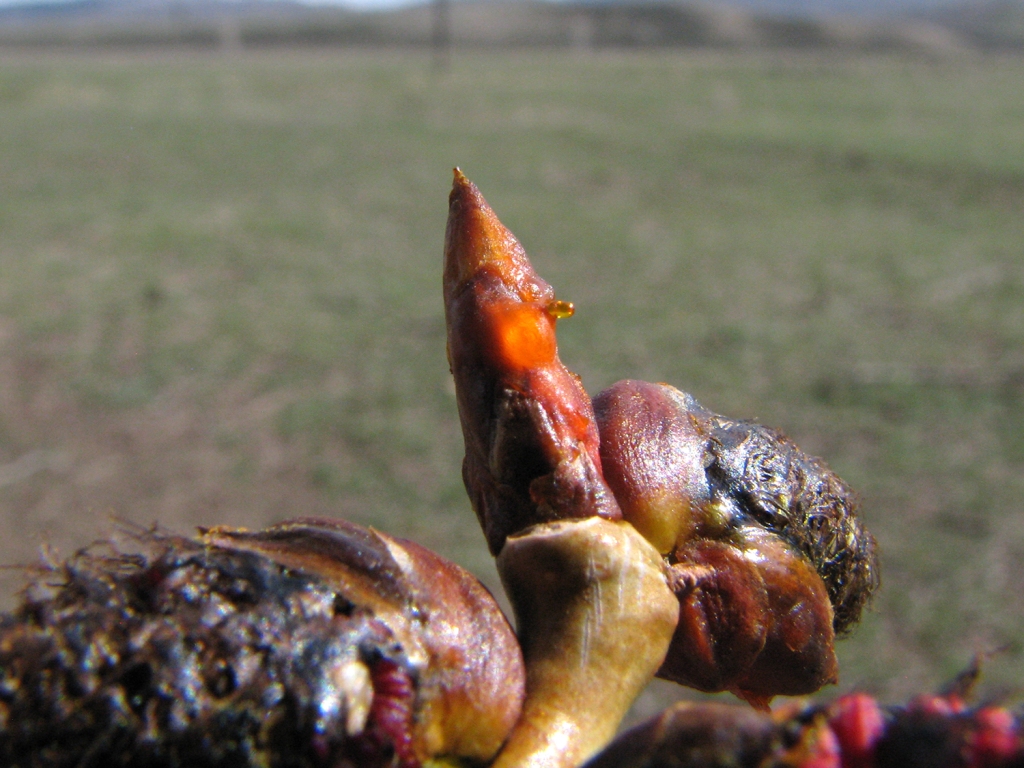
Botanically buds are incipient stems. Formed in the fall, a set of meristematic tissue (stem cells) are enclosed inside “bud scales” for the winter, all ready to break open when daylight increases, the soil thaws to release water, and the air warms. Then hormones are triggered to set the stem cells on their genetically programed path to growth. Buds can become new stems with leaves and/or new flowers. Some of the most obvious buds at this time are seen on members of the Willow Family either as a newly extending branch with leaves or in the form of catkins.
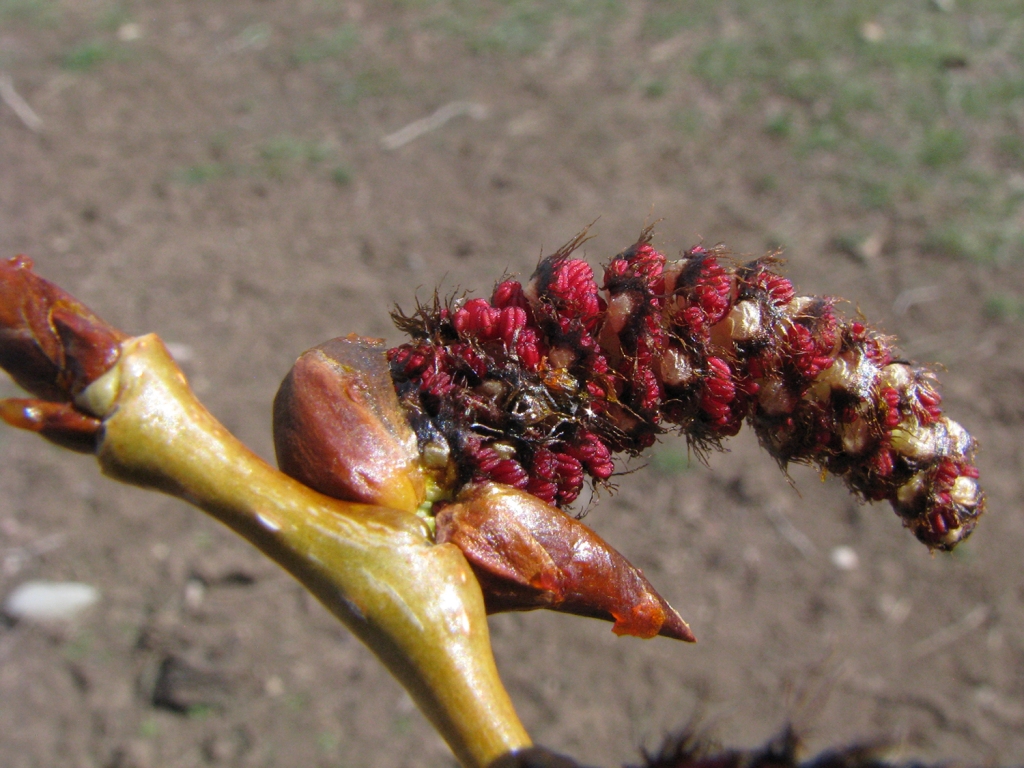
Catkins are reproductive structures. Unlike our usual flowers with fancy petals and such, catkins are typically very modest. A central stalk has many small flowers – either male or female attached to it. A “bract” or scale-like structure protects the anthers (m) or an pistil (fm). There are no sepals or petals. Most catkin flowers are wind pollinated and, therefore, come out before the leaves interrupt the flow of pollen.
There are dozens of willow species – Salix spp. – in Teton County growing from wetlands up into the alpine. Plants are often called pussy willows because of their soft silvery-looking catkins. Many willows are the very first flowers to bloom and are therefore very important sources of both nectar and pollen for the first flies and bees of the season. These insects depend on the nutritious pollen for raising their broods. The nectar is a much-needed energy source.

In willows, behind each bract are nectaries, as well as the essential sexual parts: male anthers or female pistil. (Note: the female structure overall is termed a pistil which includes a stigma at the top to catch pollen, sometimes a style or neck like structure, and the ovary which contains the ovules e.g. eggs). Male and female catkins are on different plants. Flowers exude a fragrance that lures in pollinators, and colorful red or bright yellow anthers also help to attract bees.
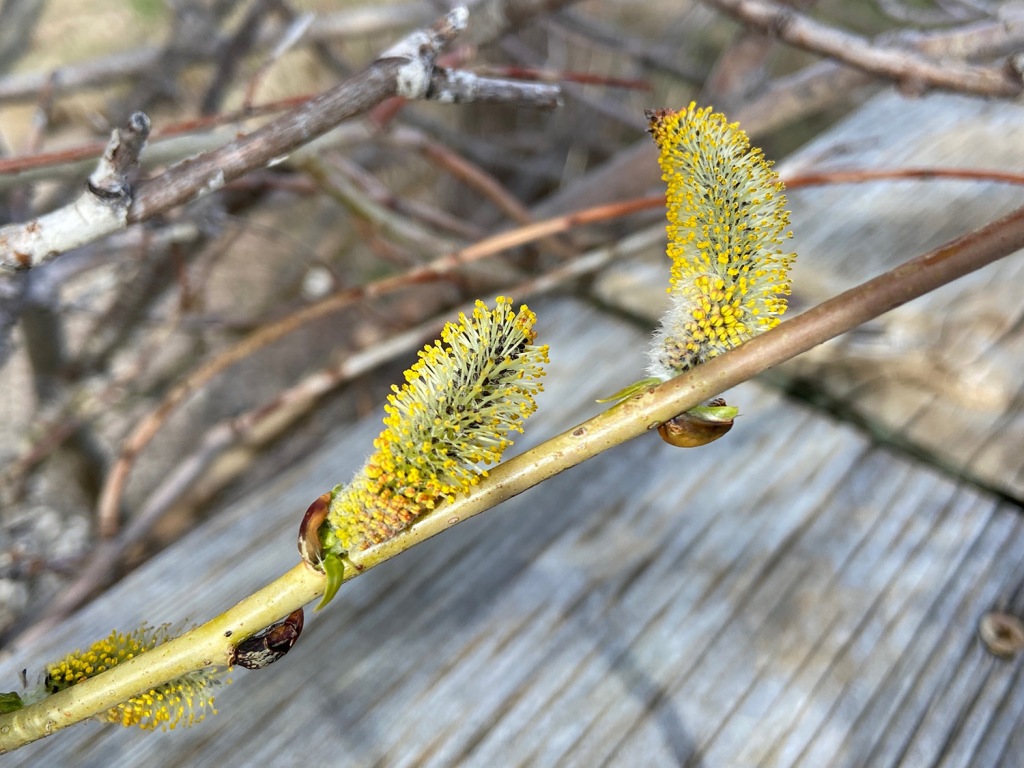
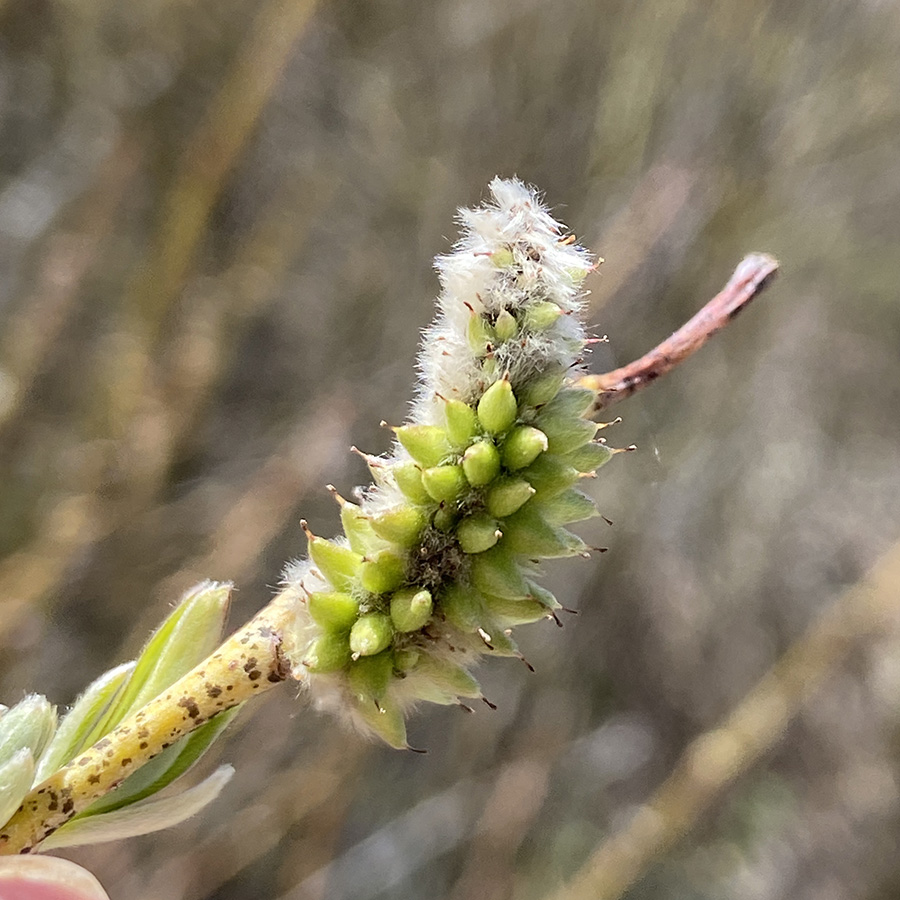
Aspens and Cottonwoods are both in the genus Populus. Unlike willows, their flowers do not have nectar and are exclusively wind pollinated. They too have male or female plants to help insure out-crossing of genes. There is no genetic diversity benefit to dropping the pollen onto a female flower on the same tree. In Populus bracts below each tiny flower are forked and hairy. The flowers are held in little membranous cups which can be hard to see. Its fun to look for these fine features with a 10x hand lens.
Trembling aspens – Populus tremuloides – have been dangling catkins for the past couple of weeks. Male catkins are falling off while female catkins are still extending or forming fruits.
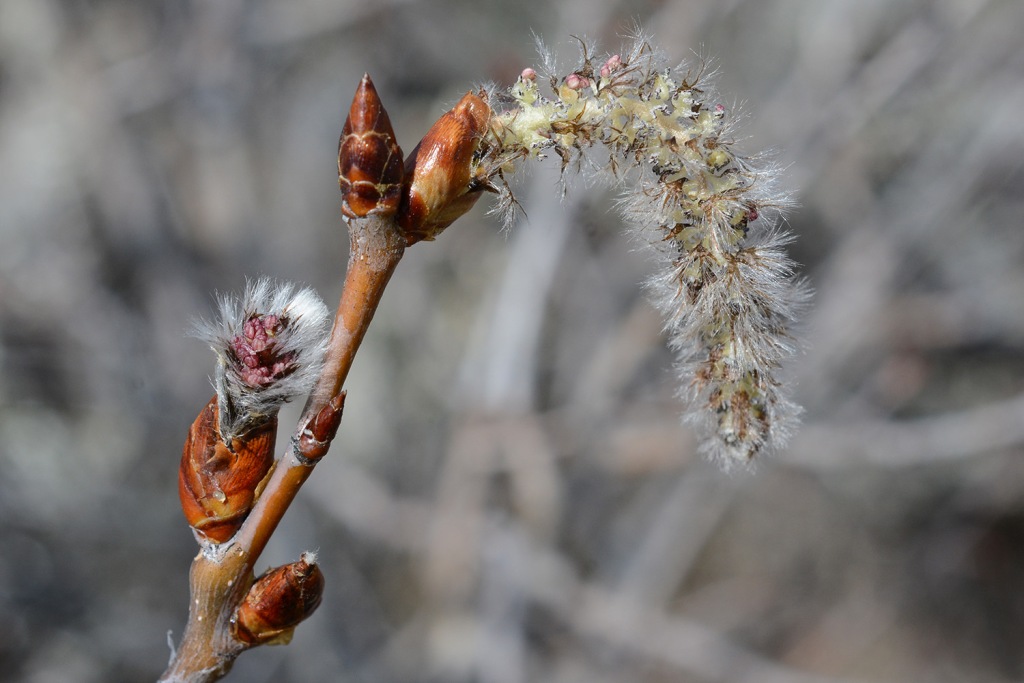
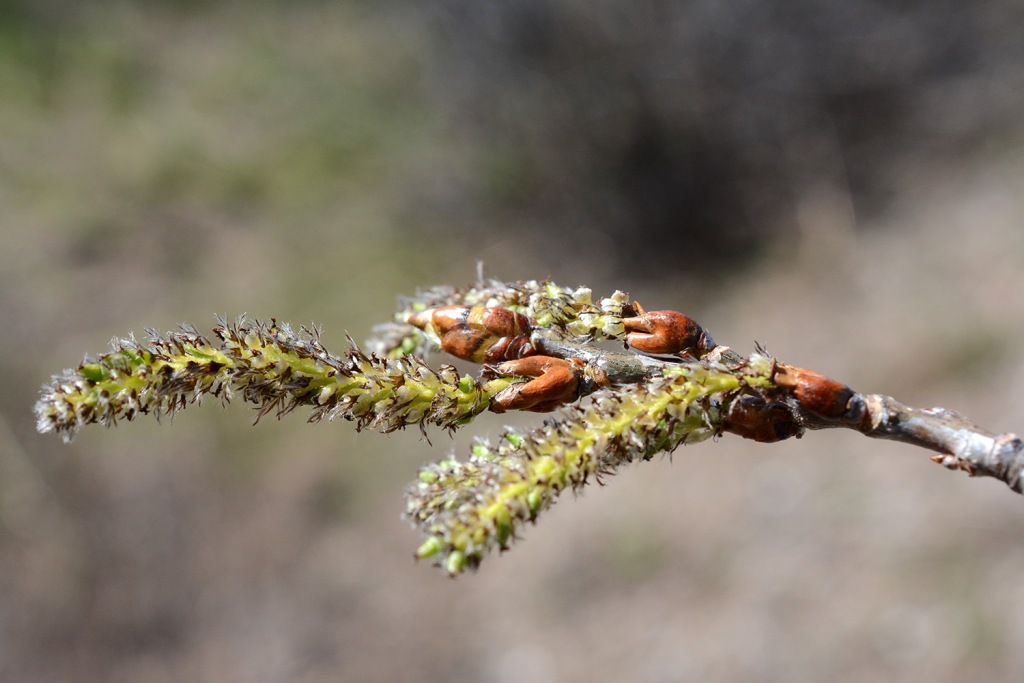
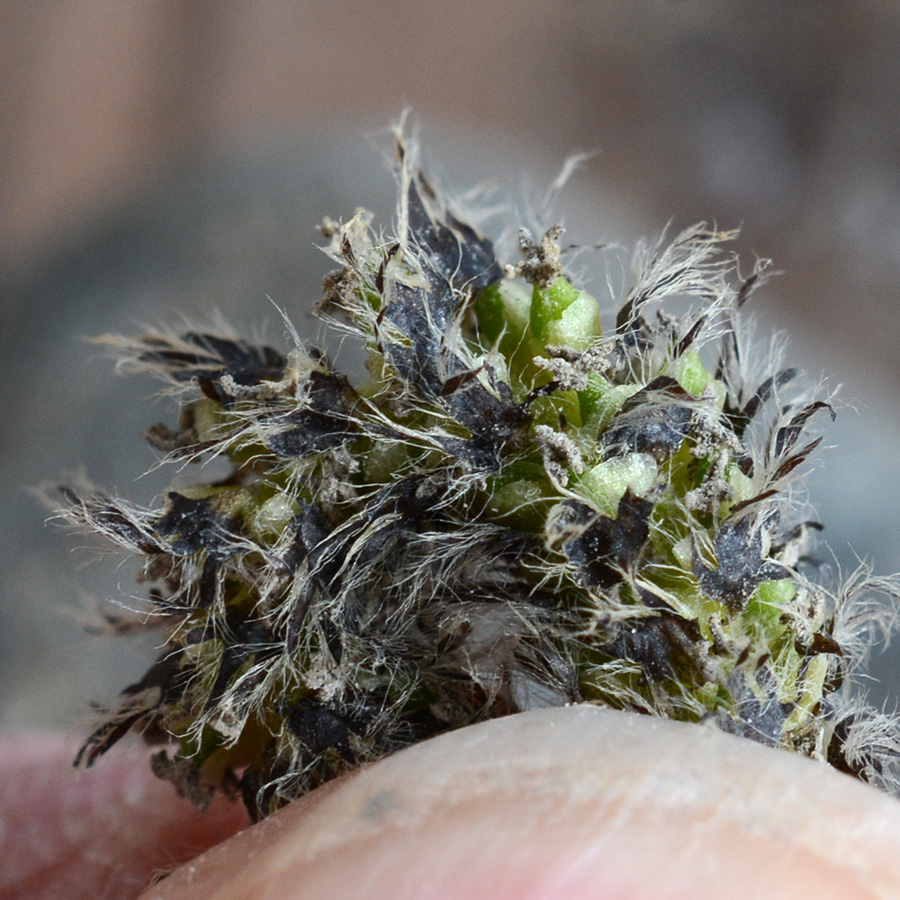
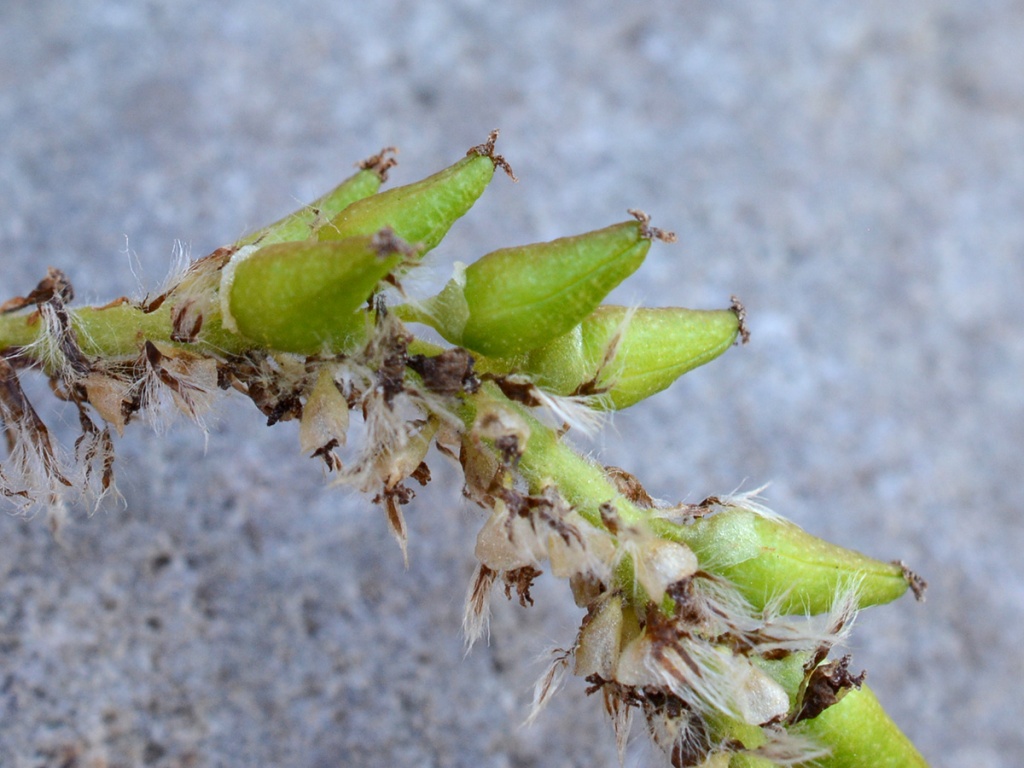
Although plentiful, aspen seeds are short-lived and require particular moisture and soils to survive. Most of our aspen trees sprout from rhizomes – underground creeping stems – rather than from seeds – to form large groves of one genetic identity.
Cottonwoods – Populus spp. – have the biggest buds and catkins. Behind each lobed and silky bract and sitting in a small cup, many red anthers expand and open up. Spent male catkins then drop off. Single female pistils also sit in little cups protected by silky bracts. Their 2- to 3-parted stigmas are relatively large and fleshy looking.
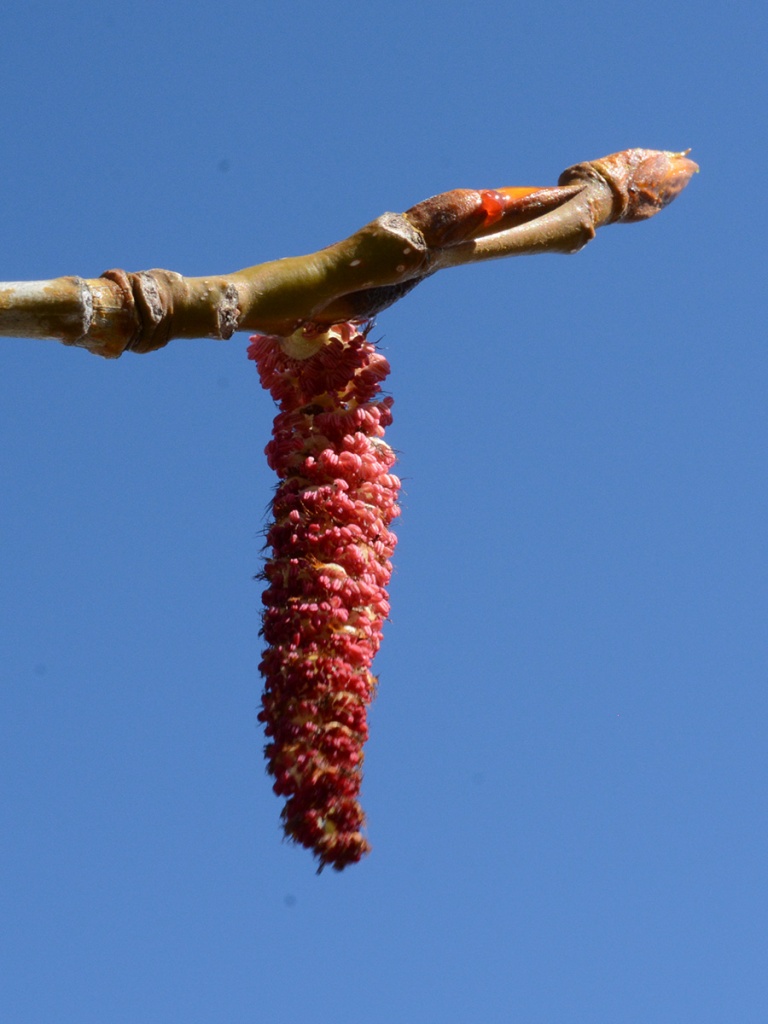
Male catkins tend to stretch and dangle loosely, their anthers waving pollen upon the wind. Then the catkins fall off, done.
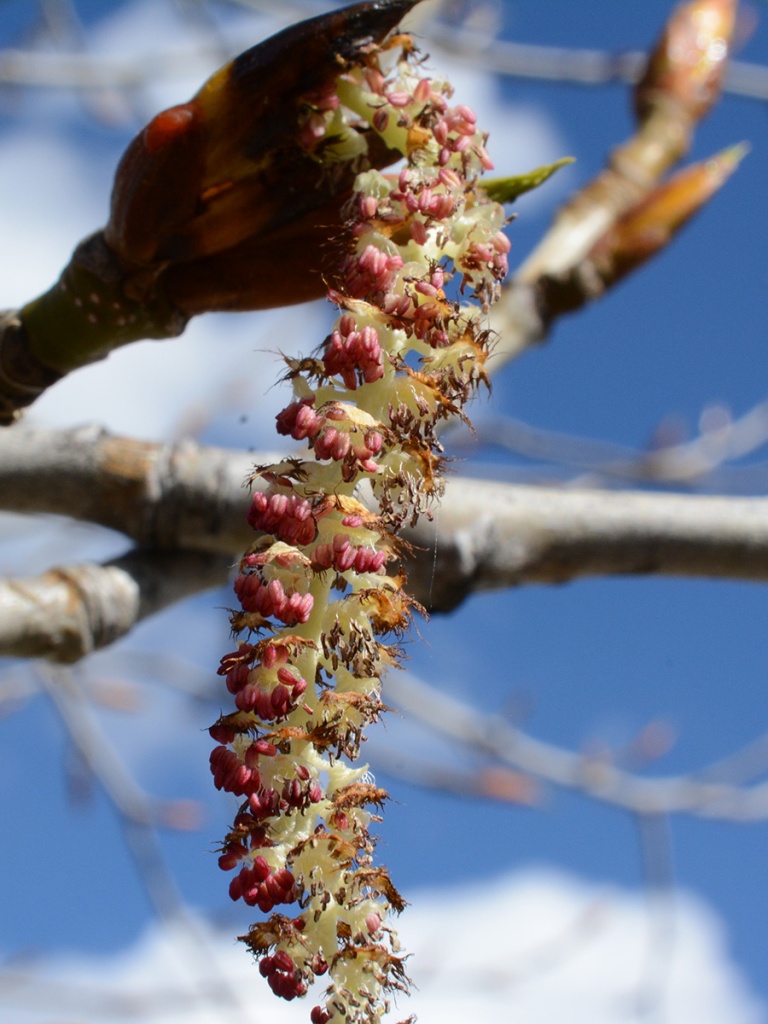
Females catkins are a bit stiffer. Here the stigmas are fleshy and assumedly sticky to catch the pollen as it wafts on the wind.
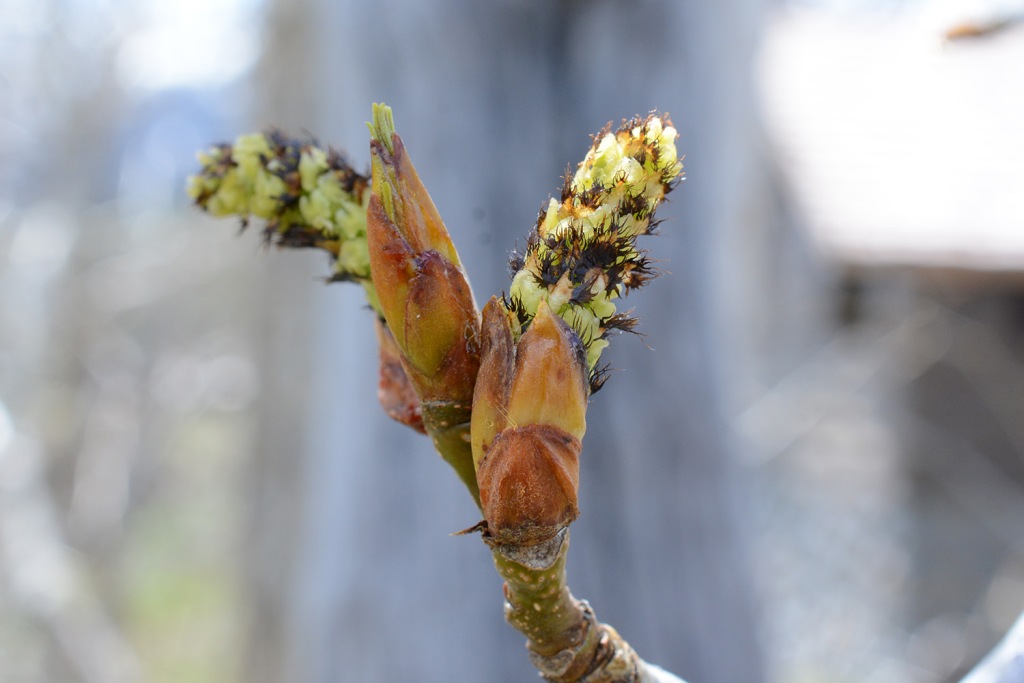
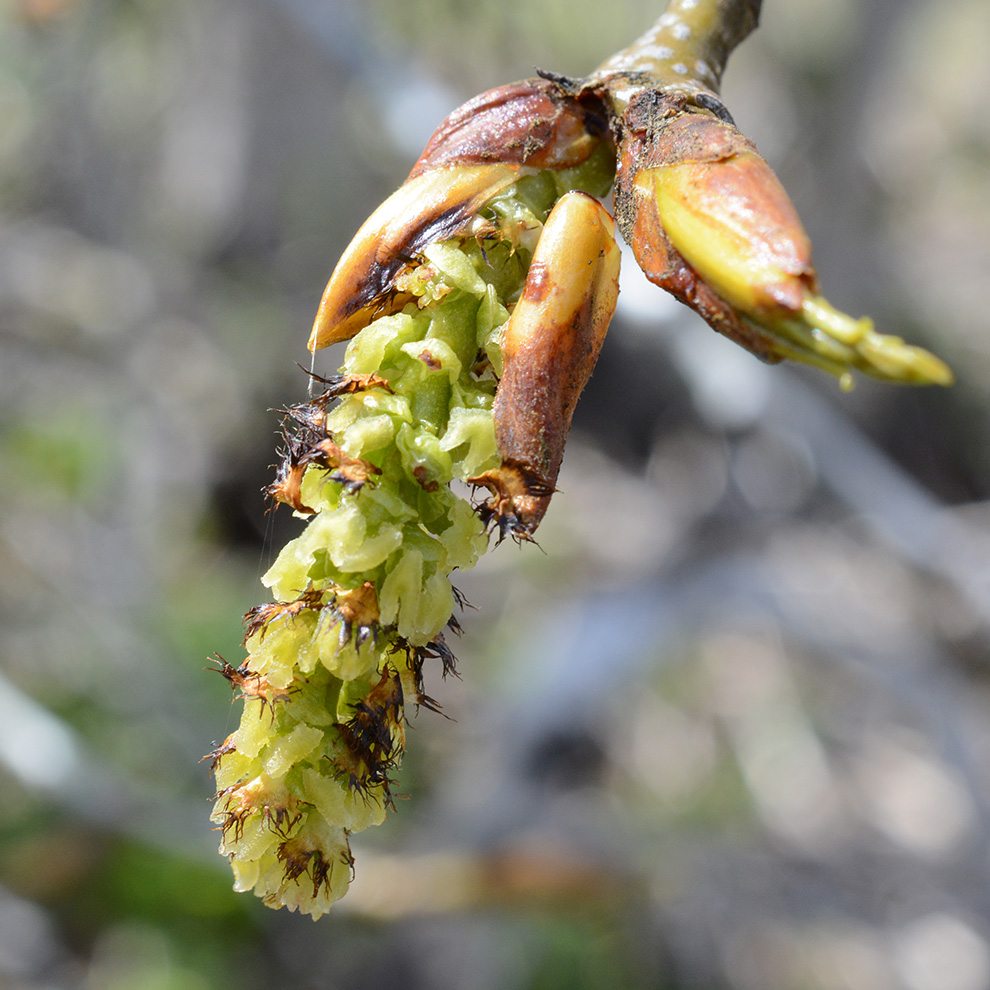
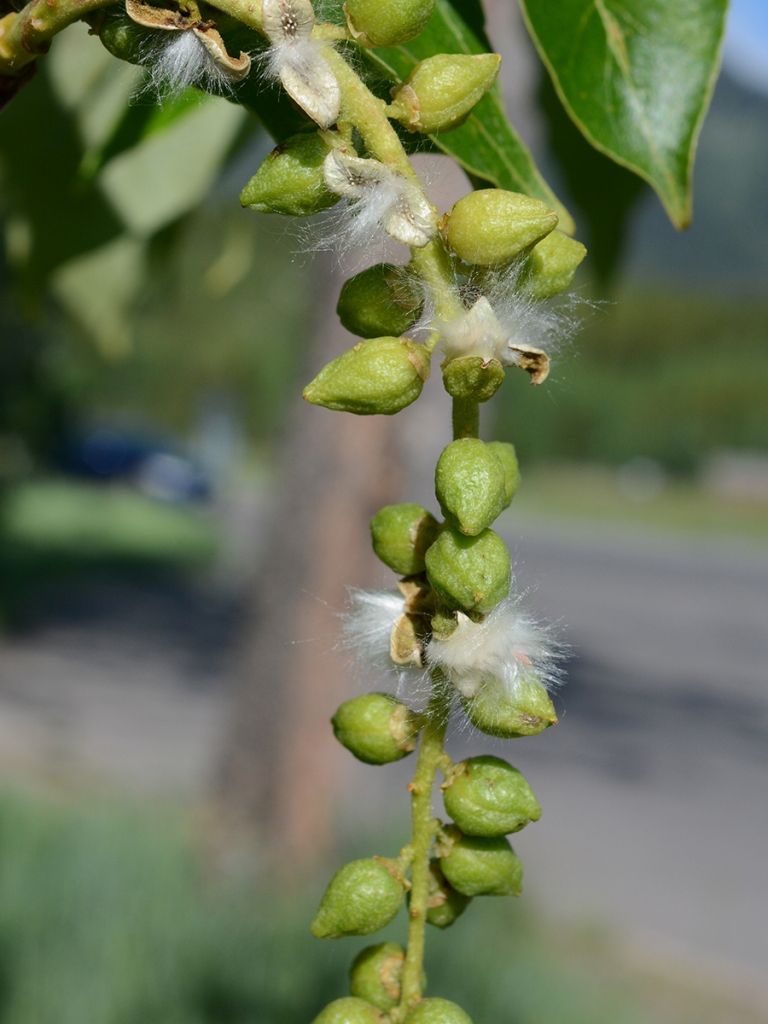

The fruits of both aspens and cottonwoods will be a capsule that splits open releasing many tiny seeds attached to fluff (hairs) for distribution by wind. Seeds are viable for only 2-4 weeks.
In cottonwoods, only one seed in thousands will end up germinating and surviving into a full-sized plant. The first root must grow fast enough to continue to reach water as the soil dries. Many cottonwoods count on episodic flooding to succeed from seed.
After the willows, aspens, and cottonwoods release their tiny seeds upon the wind—like mini-snowstorms, the old catkins fall to the ground—all within about 4-6 weeks. By then the leaves are fully unfurled and there is no trace of the profusion of reproductive activities a few weeks before.
Alders are in a separate family – the Birch Family. Their male and female catkins are on the same plant.
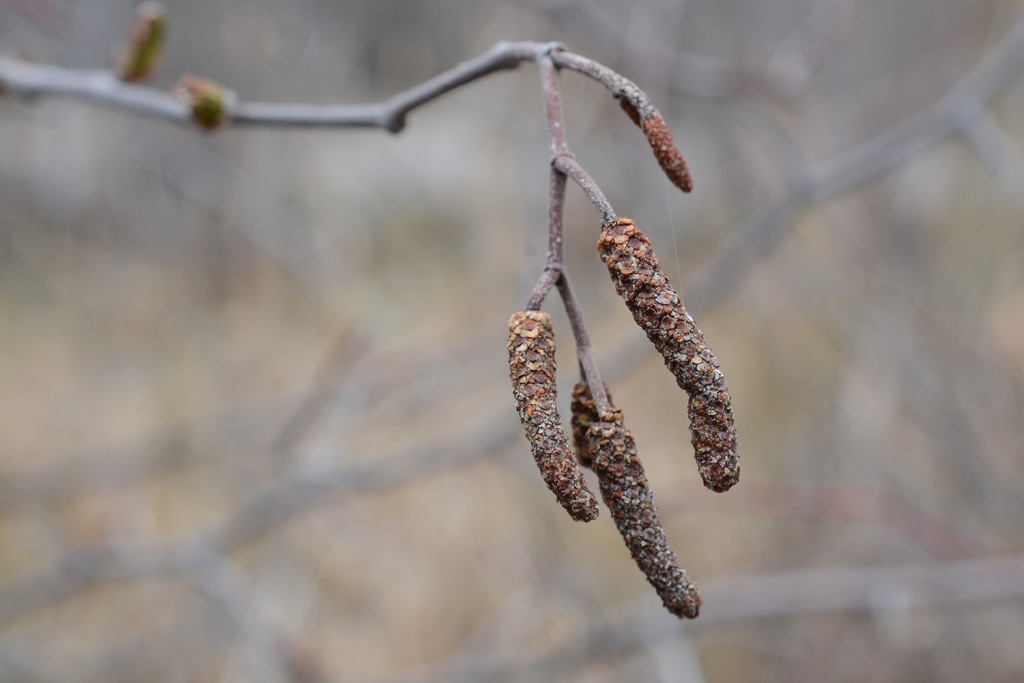
Male and female catkins are on the same tree, often on the same branch of Speckled Alders – Alnus incana var. tenuifolia. Male and female catkins have been on the ready since fall. Come spring, the male catkins stretch and dangle while the much smaller upright female catkins expand slightly.
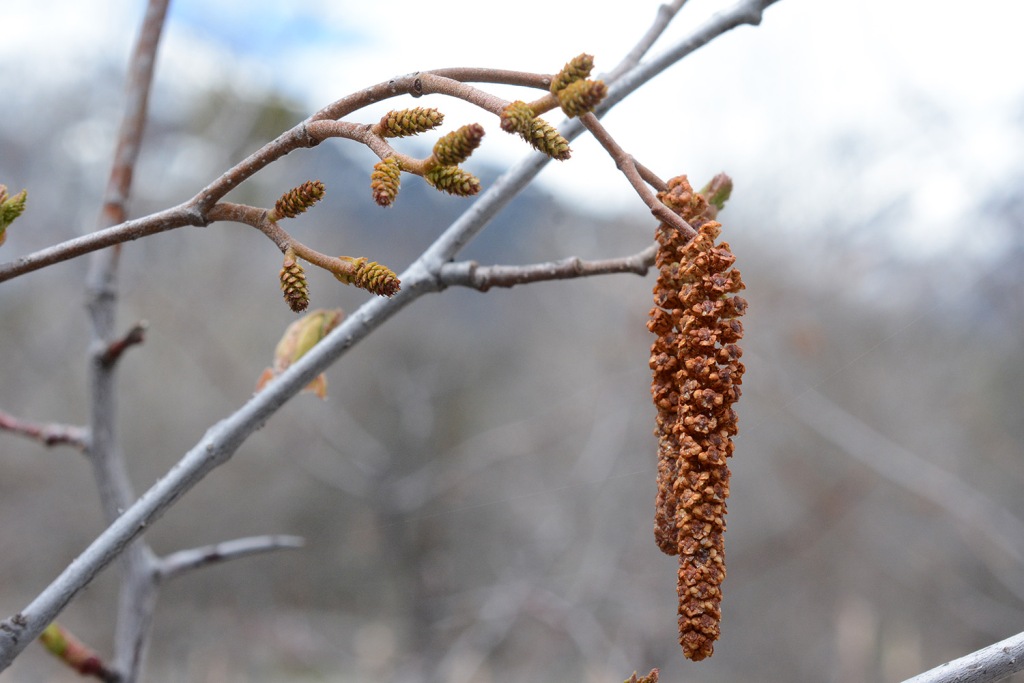
The female catkins reveal dark stigmas above each tight scale.
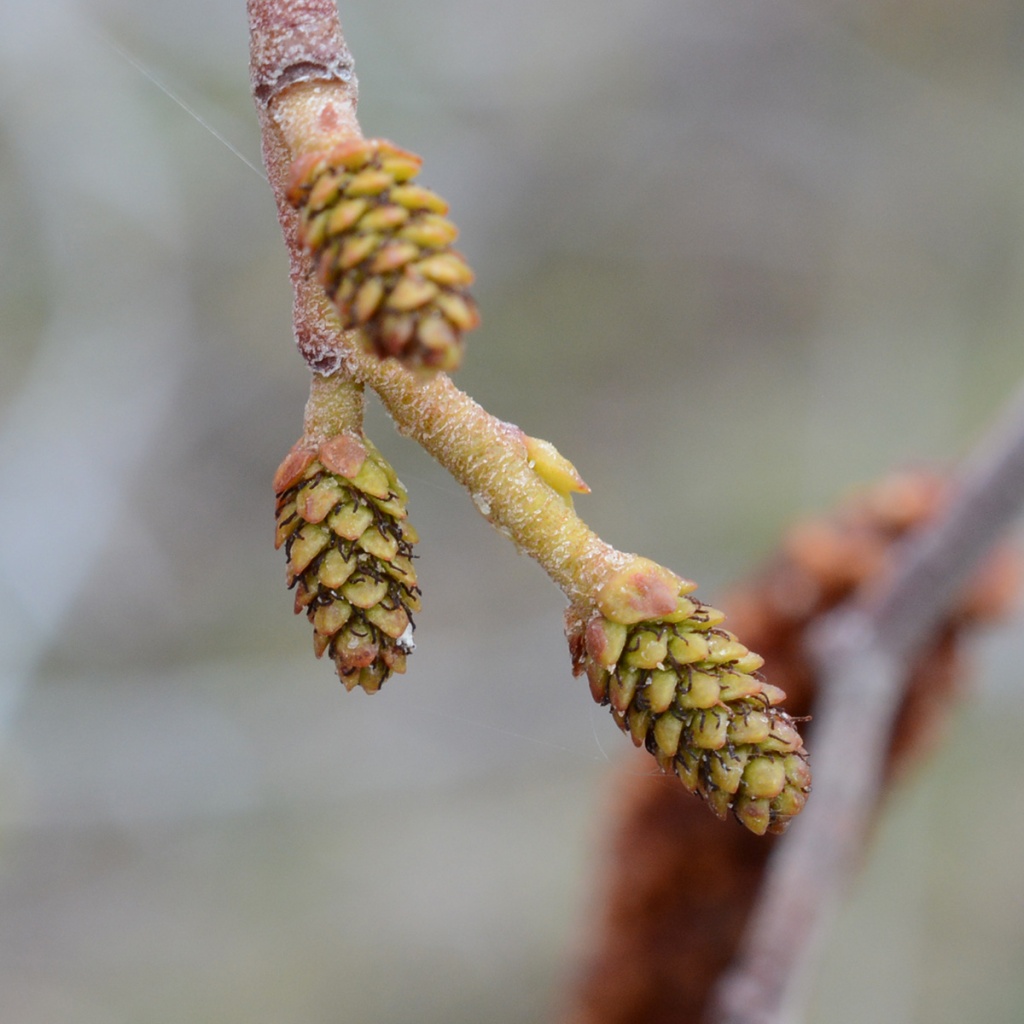
If all goes well, pollen will land on the stigmas, and a dried flat seed called a samara will slowly form. These seeds will remain within a hard cone-like structure until late autumn, when the scales will open and seeds will fly off like frisbees on the wind.
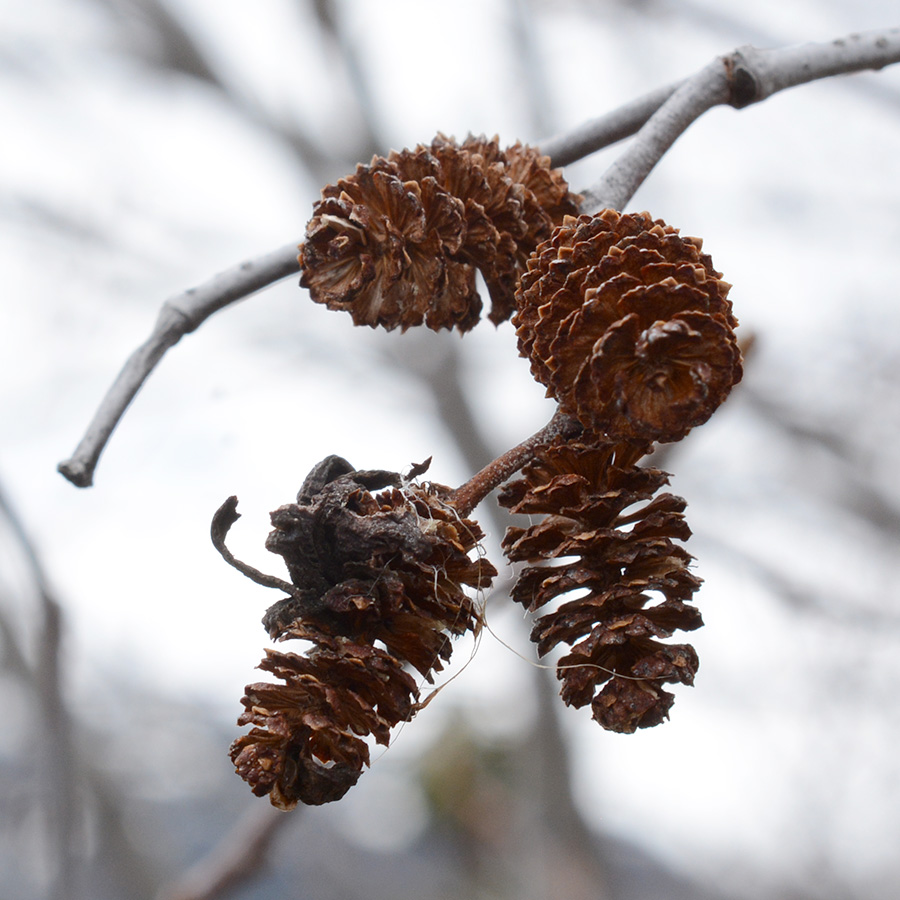
Alders can fix nitrogen (as do legumes), thereby providing much needed nutrients to exposed soils after rock slides, floods, or fires. Alders were important plants in colonizing areas after the glaciers retreated. Their fibrous roots also prevent erosion. They grow plentifully around Saw Mill Ponds and along adjacent creeks.
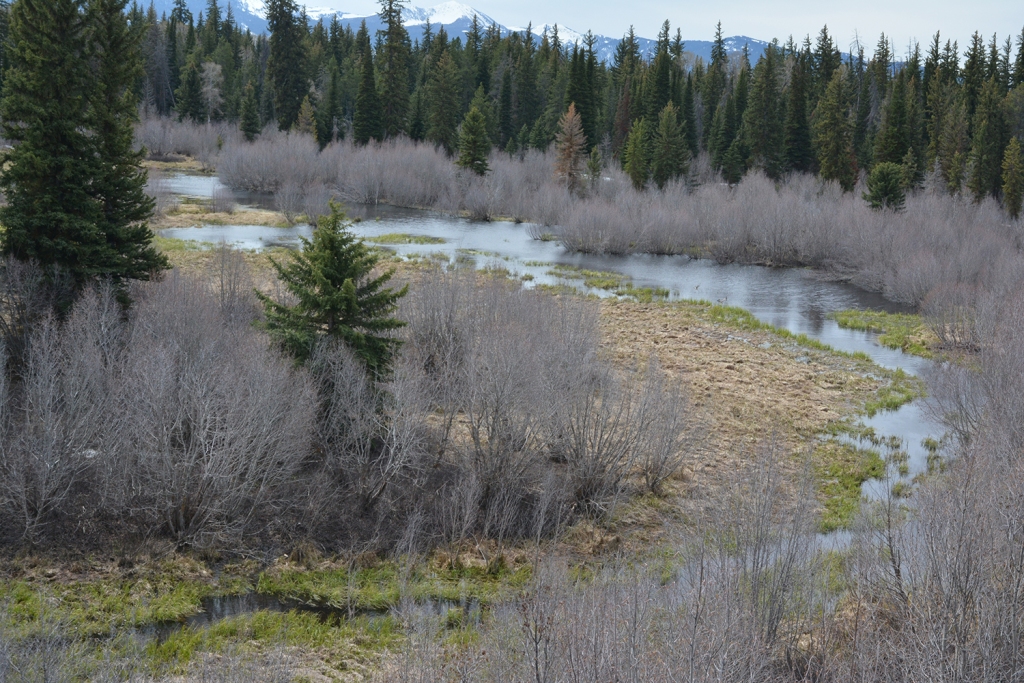
Have fun investigating the various ways flowers emerge in the spring and how they are pollinated to produce seeds for their future.
May 22, 2024 – Jackson Hole
